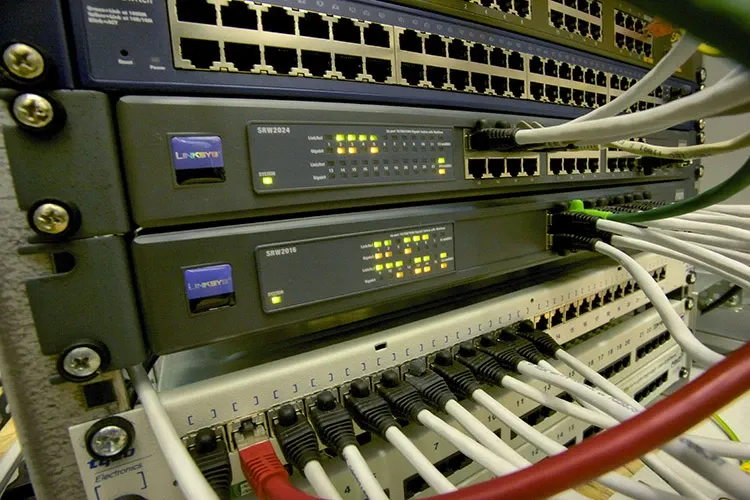Smartphone Market Grew 2.3 Percent in 4Q25
Global smartphone shipments increased 2.3% year-over-year (YoY) to 336.3 million units in the fourth quarter of 2025, according to preliminary data from IDC.

The worldwide Ethernet switch market (Layer 2/3) recorded $6.29 billion in revenue in the third quarter of 2016 (3Q16), an increase of 2.0% year over year. Meanwhile, the worldwide total enterprise and service provider (SP) router market finished at $3.56 billion in revenue in 3Q16, increasing 2.6% on a year over year basis. These growth rates are according to results published in the International Data Corporation (IDC) Worldwide Quarterly Ethernet Switch Tracker and Worldwide Quarterly Router Tracker.
From a geographic perspective, the 3Q16 Ethernet switch market recorded its strongest growth in the Middle East and Africa (MEA) region, which increased a solid 11.2% year over year, rebounding from a 2Q16 that saw a moderate decline. The United Arab Emirates (UAE) was a standout performer, growing 23.5% on an annualized basis in 3Q16. Similarly, Asia/Pacific (excluding Japan)(APeJ) increased 9.8% year over year in 3Q16. Vietnam (up 57.3% year over year) was the growth pacesetter, while a strong performance in China (up 21.5% year over year) was largely responsible for the region's overall strong performance. Latin America also saw strong growth, increasing 9.2% year over year. Strong performers included Peru (up 21.1% year over year) and Argentina (up 17.0%). Japan experienced its strongest growth in some time, increasing 2.6% on an annualized basis in 3Q16.
The remaining regions contracted in 3Q16. North America decreased 1.1% year over year in 3Q16, with Canada experiencing a notable 5.7% annualized decline. Western Europe declined by 1.9% on a year-over-year basis, despite standout quarters in Sweden (up 33.3% year over year) and Portugal (up 32.4% year over year). Central and Eastern Europe (CEE) saw the most significant decline, with revenues decreasing 5.8% on a year-over-year basis, heavily influenced by a 25.7% year-over-year decline in the Czech Republic.
"Recent macroeconomic developments and maturing IT architectures have led to a spectrum of reactions by IT decision-makers across the regions with regard to Ethernet switching investments in 3Q16. Strong growth in the 40GbE and 100GbE segments specific to datacenter deployments brought a degree of stabilization to a market in transition where the enterprise campus market for switching declined., said Rohit Mehra, vice president, Network Infrastructure, at IDC.
10Gb Ethernet switch (Layer 2/3) decreased 1.3% year over year in 3Q16, coming in at $2.22 billion, while 10Gb Ethernet switch port shipments grew 10.6% year over year with over 9.76 million ports shipped in 3Q16. 40Gb Ethernet revenue came in at $756.4 million in 3Q16, growing 20.5% year over year, while port shipments reached nearly 1.9 million ports, representing an increase of 68.5% year over year. 10Gb and 40Gb Ethernet are now joined by emerging 100Gb Ethernet (revenue up 330.1% and shipments up 447.5% on annualized basis in 3Q16) to be the primary drivers of the overall Ethernet switch market in 2016. 1Gb Ethernet switch revenue decreased 4.3% year over year, despite a 10.9% increase in port shipments in the same period, pointing to a maturing campus segment.
The worldwide enterprise and service provider router market grew 2.6% on a year-over-year basis in 3Q16 based on a 0.8% increase in the larger service provider segment and a solid 8.2% increase in enterprise routing. This will be a market to watch closely over the coming quarters as software-defined architectures start to take hold across the WAN, with the potential for SD-WAN to disrupt traditional routing architectures and WAN transport markets.
The combined enterprise and service provider router market saw a varied regional performance in 3Q16, with Asia/Pacific once again carrying the market forward. APeJ was by far the best performing region on a year-over-year basis in 3Q16, increasing 23.9%. Japan followed with 15.3% year-over-year growth. No other region experienced year-over-year growth in 3Q16: Latin America declined 2.6%, North America contracted by 3.5%, Western Europe decreased 5.7%, MEA was down 6.3%, and CEE finished 9.6% below 3Q15.
Cisco finished the quarter with a 5.4% year-over-year decline in the Ethernet switching market and market share of 57.0%, up from its 56.8% share in 2Q16 but down from 61.5% in 3Q15. In the hotly contested 10GbE segment, Cisco held 53.5% of the market in 3Q16, up from 53.0% in the previous quarter. Cisco saw its combined service provider and enterprise router revenue decrease 4.8% on an annualized basis, while its market share came in at 44.2% in 3Q16, down from 44.8% in 2Q16.
Huawei continued to perform well in both the Ethernet switch and the router markets. Huawei's Ethernet switch revenue grew 91.6% year over year in 3Q16, for a market share of 7.2%. Huawei's enterprise and service provider router revenue increased 23.8% over the same period, with 16.6% of the total router market in 3Q16.
Hewlett Packard Enterprise's (HPE) Ethernet switch revenue fell 4.3% quarter over quarter in 3Q16. HPE's market share stands at 5.5% in 3Q16, down from its 6.0% share in 2Q16. (Note: HPE and H3C are tracked separately as of 2Q16).
Juniper Ethernet switching increased 7.1% quarter over quarter in 3Q16. Juniper also saw a 5.9% increase year over year in combined service provider and enterprise router revenues, with market share of 17.4%.
Arista Networks also performed well in 3Q16, with its Ethernet switching revenue rising 31.5% year over year.
"Software-defined network architectures and network transformation for the digital economy are among the factors shaking up the core network infrastructure segments. This, combined with the emergence of new Ethernet port speeds across the Datacenter and enterprise campus deployments, will likely lead to continued interest., said Petr Jirovsky, research manager, Worldwide Networking Trackers.